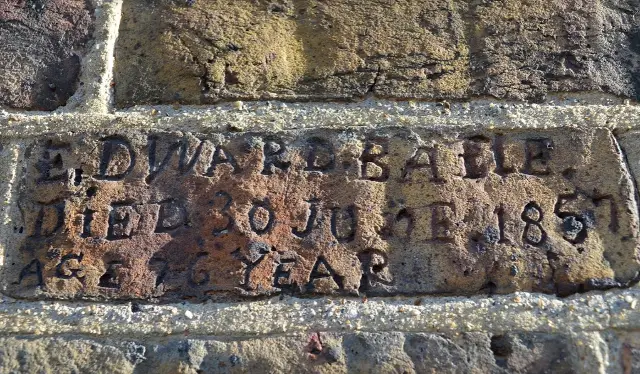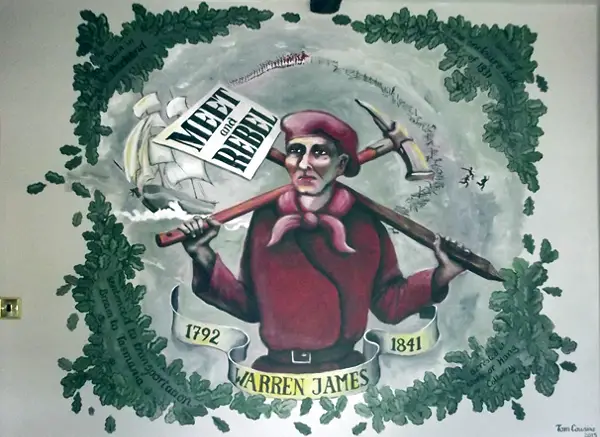Celia shares this latest news on behalf of Historic England. Ed
A memorial to the male inmates of the former Watford Workhouse, a statue of Holocaust hero Sir Nicholas Winton, and a mural celebrating black history icons are among the many memorials nominated by the public in response to a call-out by Historic England to find the secret and lesser-known murals, statues and tributes in the South East.
The search was carried out as part of Historic England’s Immortalised season, which aims to help people explore the country’s memorial landscape – who is reflected, who is missing, and why.
Few women and minorities
Monuments and statues are under increasing scrutiny as debates grow about why there are so few women and minorities among our statues.
As part of Immortalised Historic England is organising a debate and public participation to explore who and what will be remembered in our public spaces, and how we and future generations will commemorate.
Immortalised exhibition
People from across the South East submitted photographs and stories of memorials, locally known and loved, but others that have almost been forgotten.
A selection will be unveiled in the Immortalised exhibition which will open in London on Thursday 30 August. On the back of the nominations, one memorial in the South East has been listed by the Department for Digital, Culture, Media and Sport (DCMS) on the advice of Historic England. Further listings are likely to be announced as part of the legacy of the season.
Exploring the commemorations
As well as showcasing some of England’s local monuments, street shrines and community tributes, Immortalised: The People Loved, Left and Lost in our Landscape explores the variety of ways people and events have been commemorated in England, past and present.
Stories of immortalisation, from the heroic and sad, to the quirky, inspirational and challenging, are told through photographs, archival material and individual objects presented in an immersive way that gives life and voice to the monuments and memorials on show.
Who and why?
The exhibition also looks at who we have chosen to memorialise in the past, and why, and highlights the well-documented lack of women, working class people and people of colour in England’s memorial landscape.
Also on display are the winning designs of a national competition that asked artists, architects and designers to explore and visualise what memorials of the future could look like.
Duncan Wilson, Chief Executive of Historic England, said:
“We are very grateful that so many people living in the South East took the time to tell us about memorials in their communities and the stories behind them. At a time when our national statues and memorials are under increasing scrutiny, we’re delighted to shine a light on these often undiscovered and under-appreciated but precious markers of our past.
“Every one of those that’s been nominated has a local champion and someone who cares about it and about the story it tells. It’s important for us all to know who has been commemorated in our public spaces and what this can tell us about our history, as we look at how public memorials are evolving today.”
Memorials nominated by people living in the South East
Locally well-loved statues, memorials, murals and shrines were suggested by people living in the South East, including:
Memorial cross, Hamstead Ledge, Isle of Wight
A Celtic cross, erected as a memorial to David George Cox, Patrick Hope Pollock and Robin Murray Cox, three young men who drowned at Hamstead ledge, Isle of Wight in 1932/4.
The memorial cross reads: IN LOVING MEMORY OF DAVID GEORGE COX AGED 20 LOST AT SEA OFF HAMSTEAD LEDGE WITH HIS FRIEND WILLIAM PATRICK HOPE POLLOCK AGED 20 ON NOV 27 1932 THE SEA IS HIS ROBIN MURRAY COX AGE 21 LOST AT SEA JUNE 2 1934 IN DEATH THEY ARE NOT DIVIDED GOD GIVE THEM REST
The inscription has eroded over time and is now very indistinct.
Memorial stone, Afton Down, Isle of Wight
This is a memorial to Edward Lewis Miller from Goudhurst in Kent, a youth who fell to his death from the cliffs here in 1846.
The stone reads: ERECTED IN REMEMBRANCE OF A MOST DEAR AND ONLY CHILD WHO WAS SUDDENLY REMOVED INTO ETERNITY BY A FALL FROM THE ADJACENT CLIFF TO THE ROCKS BENEATH 28TH AUGUST 1846 — READER PREPARE TO MEET THY GOD, FOR THOU KNOWEST NOT WHAT A DAY MAY BRING FORTH.
Local library user, Cobbett Hub and Library, Southampton
‘Art Within Reach’ is a life-size bronze statue from 1991 standing next to the Cobbett Hub and Library in Southampton depicting a woman removing a book from the library wall.
The figure was modelled on Dorothy ‘Dot’ Winteridge by artist Kevin Atherton. Dot is a great supporter of the library in Bitterne and has been ever since it opened in 1936.
Male inmates, former Watford Workhouse
Etched bricks on the walls of the former male courtyard of the Watford Workhouse commemorate some of the inmates who died there. Their names are shown, and sometimes the dates when they died. It is believed that they have no other memorial or grave marker. Watford Workhouse was built in 1836-7 and could house up to 100 inmates.

Though it was often a last resort, the ‘inmates’ were there of their own free will. People usually ended up in the workhouse if they were too poor, old or ill to support themselves. Before the establishment of public mental asylums, the mentally ill and mentally handicapped were often consigned to the workhouse too. The building is now part of Watford General Hospital on Vicarage Road.
Narrowboat fire memorial, Wolvercote, Oxford
This memorial in the shape of a traditional narrow boat rudder commemorates a mother and her two children who died in a narrow boat fire in 1996. It was built by the local boating community to stand alongside the original wooden rudder which is rotting away.
The new metal version was painted by a local artist who lives on a boat on the same stretch of canal in Wolvercote. Daffodils are planted around it every year. The memorial is at the heart, both physically and emotionally, of community memory amongst live aboard boaters in Oxford.
Peace Memorial, Hailey, Oxfordshire (newly listed at Grade II)
In front of Hailey Manor and overlooking Delly End green is a ‘Peace Memorial’ erected c.1920. It was commissioned by Mrs Phipps, of Hailey Manor, to commemorate peace at the end of the First World War and the safe return of all those who survived the conflict, including her two sons and a number of nephews.
The small domed temple-like structure has no names, text or obvious symbolism, but once a year in the summer a ‘peace service’ is held.
Sir Nicholas Winton, Maidenhead Railway station
A statue of Sir Nicholas Winton, who organised the escape of 669 Jewish children destined for Nazi concentration camps from occupied Prague in 1939, sits on a bench on platform three of Maidenhead station.
Sir Nicholas kept quiet about his work for 50 years until his wife found a scrapbook. The bronze figure was unveiled in 2010 when Sir Nicholas was 101. He is shown reading a book which contains images of the children he saved and the trains used to evacuate them.
Black history mural, Reading Central Club
This mural on the Mill Lane wall of Reading Central Club was designed to show the positive role that black people have played throughout history. It includes figures such as Harriet Tubman, Martin Luther King and Bob Marley as well as Reading-based people involved in founding Central Club.
A plaque on the wall states it was “Livicated on 16th June 1990” and remembers C.L.R. James (1901-1989) and the peaceful anti-apartheid protestors who were massacred in Soweto in 1976 by the South African regime during the uprising. It also gives the names of the people involved with painting the mural.
Winning Shot, Woking
This bronze statue in Woking’s revamped Jubilee Square celebrates the London 2012 Paralympic Games.
‘Winning Shot’ depicts Paralympian Ade Adepitan playing wheelchair basketball. It was made by local sculptor Christine Charlesworth.
Exhibition Visitor Information
Immortalised: The People Loved, Left and Lost in our Landscape
30th August – 16th September 2018, Wednesday to Sunday
The Workshop, 26 Lambeth High Street, Lambeth, London SE1 7AG
Nearest tube: Vauxhall (Victoria line) and Lambeth North (Bakerloo + Northern lines)
More information about the season can be found on Historic England’s website
The Immortalised season does not tackle the subject of war memorials, which have been the subject of a separate four-year programme by Historic England to mark the centenary of the First World War, which had an enormous impact on England’s memorial landscape.





